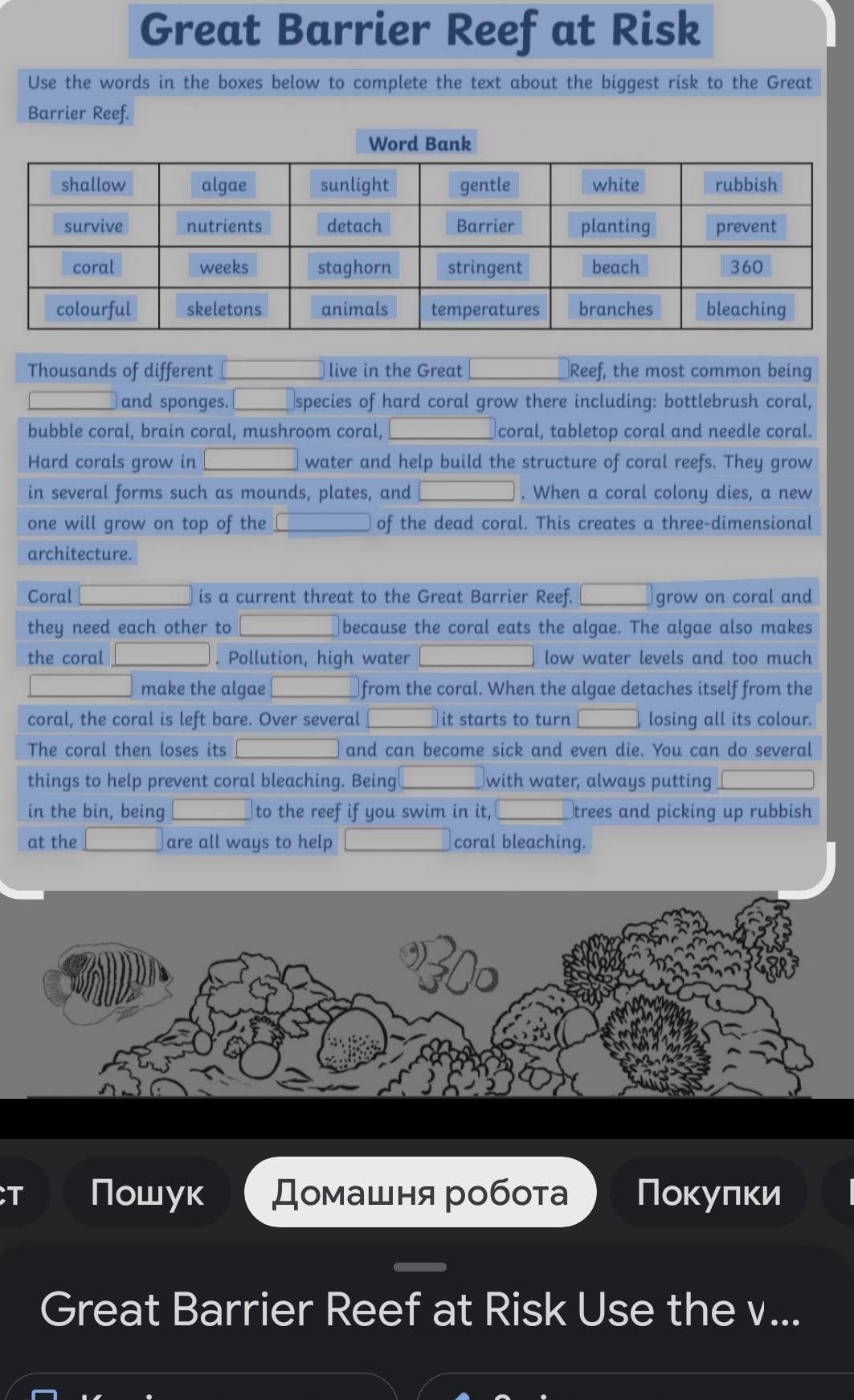Ответы
Ответ дал:
1
Усі потрібні слова розмістил.
Буду вдячен за високу оцінку та корону!
Дякую.
Thousands of different animals live in the Great Barrier Reef, the most common being coral and sponges. 360 species of hard coral grow there including: bottlebrush coral, bubble coral, brain coral, mushroom coral, staghorn coral, tabletop coral and needle coral. Hard corals grow in shallow water and help build the structure of coral reefs. They grow in several forms such as mounds, plates, and branches. When a coral colony dies, a new one will grow on top of the skeletons of the dead coral. This creates a three-dimensional architecture.
Coral bleaching is a current threat to the Great Barrier Reef. Algae grow on coral and they need each other to survive because the coral eats the algae. The algae also makes the coral colourful. Pollution, high water temperatures, low water levels and too much sunlight make the algae detach from the coral. When the algae detaches itself from the coral, the coral is left bare. Over several weeks it starts to turn white, losing all its colour. The coral then loses its nutrients and can become sick and even die. You can do several things to help prevent coral bleaching. Being stringent with water, always putting rubbish in the bin, being gentle to the reef if you swim in it, planting trees and picking up rubbish at the beach are all ways to help prevent coral bleaching.
Буду вдячен за високу оцінку та корону!
Дякую.
Thousands of different animals live in the Great Barrier Reef, the most common being coral and sponges. 360 species of hard coral grow there including: bottlebrush coral, bubble coral, brain coral, mushroom coral, staghorn coral, tabletop coral and needle coral. Hard corals grow in shallow water and help build the structure of coral reefs. They grow in several forms such as mounds, plates, and branches. When a coral colony dies, a new one will grow on top of the skeletons of the dead coral. This creates a three-dimensional architecture.
Coral bleaching is a current threat to the Great Barrier Reef. Algae grow on coral and they need each other to survive because the coral eats the algae. The algae also makes the coral colourful. Pollution, high water temperatures, low water levels and too much sunlight make the algae detach from the coral. When the algae detaches itself from the coral, the coral is left bare. Over several weeks it starts to turn white, losing all its colour. The coral then loses its nutrients and can become sick and even die. You can do several things to help prevent coral bleaching. Being stringent with water, always putting rubbish in the bin, being gentle to the reef if you swim in it, planting trees and picking up rubbish at the beach are all ways to help prevent coral bleaching.
canmadelernina:
дякую
велике дякую
Завжди рад допомогти :)
Вас заинтересует
2 года назад
2 года назад
8 лет назад
8 лет назад
9 лет назад
9 лет назад
